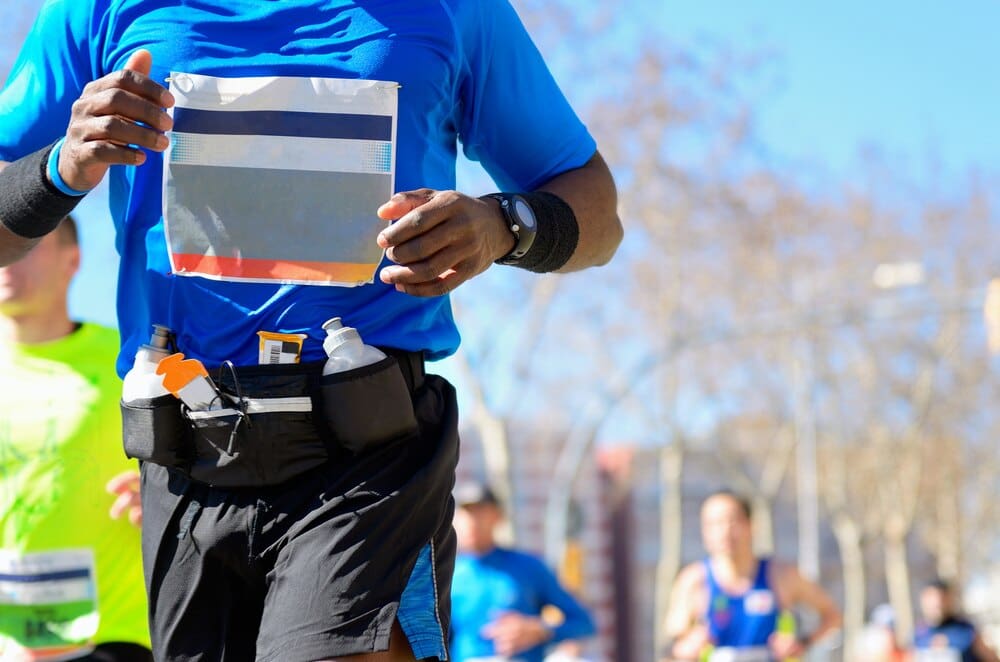For the thousands of runners toeing the line for their first Miami Marathon, mastering a disciplined pacing strategy is the single most critical factor for success. This essential race-day skill is what separates a triumphant finish from a grueling 26.2-mile shuffle. For first-timers, a smart plan—developed during training and executed with patience—is the key to conquering the distance, managing Miami’s notorious heat and humidity, and avoiding the dreaded “wall,” ensuring the entire experience is one of achievement rather than agony.
The Unique Challenge: Pacing for Miami’s Climate and Course
Unlike cooler, hillier marathons, the Miami course presents a distinct set of challenges that can derail even the most well-trained runner. The course is famously flat and fast, which, combined with the electric atmosphere and massive crowds, creates a powerful temptation to start out at a blistering pace. This is the first and most common mistake a novice marathoner makes.
Race day adrenaline is a real physiological phenomenon. It masks fatigue and makes paces that would feel challenging in training feel deceptively easy in the first few miles. However, this energy is fleeting. Going out too fast burns through your body’s limited supply of stored carbohydrate (glycogen) at an unsustainable rate, virtually guaranteeing a painful slowdown in the latter stages of the race.
The other primary factor is Miami’s climate. Even with an early morning start, heat and humidity are almost always part of the equation. Your body has to work significantly harder to cool itself in humid conditions, which diverts blood flow away from your working muscles. This increases your heart rate and your rate of perceived exertion, meaning a pace that feels easy at 60 degrees can feel brutally hard at 75 degrees with high humidity.
Building Your Personal Pace Plan
A successful marathon day begins weeks and months before you arrive at the start line. Your training runs are not just about building endurance; they are dress rehearsals for race day, and pacing should be a central focus. Your goal is to identify a realistic marathon pace that you can sustain for the full distance.
Using Training Data to Find Your Pace
The most reliable way to predict your marathon performance is to look at your performance in shorter races. If you have recently run a half marathon, 10K, or even a 5K, you can use online calculators (such as those based on the VDOT formula by Dr. Jack Daniels or the McMillan running calculator) to get a scientifically-backed estimate of your marathon potential.
As a general rule, your marathon pace per mile will be significantly slower than your half marathon pace. For many runners, this can be a difference of 30 to 60 seconds per mile, or even more. Use these calculators as a starting point to establish a target pace for your long runs.
During your longest training runs (16, 18, or 20 miles), practice running the last several miles at your proposed marathon pace. This teaches your body and mind what that effort feels like on tired legs. If you can’t hold the pace at the end of a long run, it is likely too aggressive for race day.
The “Conversation Pace” Test
One of the most effective, low-tech ways to gauge your effort is the “conversation pace” test. For the vast majority of your marathon, you should be running at an effort level where you could speak in short, complete sentences. If you are breathing so heavily that you can only gasp out one or two words, you are working too hard and need to slow down.
For a first-time marathoner, the primary goal should always be to finish feeling strong and in control. Adhering to a conversational effort for the first 20 miles is the safest and most effective strategy to ensure you have the energy reserves to tackle the final 10K with confidence.
Adjusting for Heat and Humidity
Your pace plan cannot be set in stone; it must be adaptable to race-day conditions. A week before the race, start monitoring the weather forecast for Miami. If the predicted temperature or humidity is higher than what you’ve been training in, you must adjust your pace goal downward. Your ego is your enemy here.
A common guideline is to slow your pace by 10 to 15 seconds per mile for every 10 degrees the temperature rises above 60°F. Humidity can have an even greater impact. Showing up with a rigid time goal and ignoring the weather is a recipe for disaster. A smart runner respects the conditions and runs by effort, not just by the numbers on their watch.
Executing Your Race Day Strategy: A Blueprint
Having a plan is one thing; executing it amidst the chaos and excitement of race day is another. The key is to break the 26.2 miles into manageable segments, each with a specific objective.
Miles 1-3: The Art of Restraint
These are arguably the most important miles of your marathon. Your goal here is simple: hold back. You should intentionally run these first few miles 30 to 45 seconds slower than your target marathon pace. You will feel great, and you will watch hundreds of people sprint past you. Let them go. You are banking precious energy that you will desperately need later. Starting slow is the hallmark of an intelligent marathoner.
Miles 4-20: Settle into a Rhythm
After the initial miles, it’s time to slowly dial into your planned marathon pace. This long middle section is the heart of the race. Your focus should be on consistency and efficiency. Lock into your rhythm, control your breathing, and monitor your effort level. This is where you execute your fueling and hydration plan, taking in gels and sipping water at every aid station.
Use your GPS watch as a guide, but don’t become a slave to it. GPS signals can be spotty among downtown Miami’s tall buildings. Rely more on your internal sense of effort—your RPE, or Rate of Perceived Exertion. The pace should feel comfortably challenging, a 5 or 6 on a scale of 1 to 10.
Miles 21-26.2: The Moment of Truth
This is where your race is truly made. If you have paced yourself wisely, you will enter the final 10K with the strength to maintain your pace. While others who started too fast are now walking, cramping, and struggling, you will be the one passing them. This is the incredible payoff for your earlier discipline.
The final miles will be hard; there is no escaping that. But the discomfort will be manageable. Focus on your form, break the remaining distance into smaller goals—”just get to the next bridge,” “just make it to the next aid station”—and draw energy from the cheering crowds. If you have a little left in the tank for the final mile, you can allow yourself to pick up the pace and finish strong.
Your Pacing Toolkit
Several tools can help you execute your pacing plan on race day. Familiarize yourself with them during your training.
The GPS Watch
A GPS watch provides invaluable real-time feedback on your current pace, average pace, and distance covered. Use its lap function to track your mile splits. However, be wary of “pace chasing.” Your pace will naturally fluctuate slightly. Use the watch as a data point, but let your body and your breathing be your ultimate guide.
Pace Bands
A pace band is a simple, waterproof wristband printed with the cumulative time for each mile marker based on your goal finish time. This eliminates the need for mental math during the race and provides a quick, at-a-glance check to see if you are on track. They are available at most race expos or can be easily printed from online sources.
Official Pace Groups
The Miami Marathon offers official pace groups led by experienced runners who are tasked with running an even pace to hit a specific finish time (e.g., 4:00, 4:15, 4:30). Running with a pacer can be a fantastic option, as it takes the mental load of pacing off your shoulders. Simply tuck into the group and follow their lead. However, be prepared to drop back from the group if their pace feels too fast for you on that particular day.
Ultimately, a successful first marathon is not defined by the time on the clock. It is defined by the experience. By developing a smart, conservative pacing strategy based on your training and the day’s conditions, you give yourself the best possible chance to cross that finish line on Ocean Drive with a smile on your face. The true victory lies in running your own race, finishing strong, and earning the title of marathoner with wisdom and strategy.







